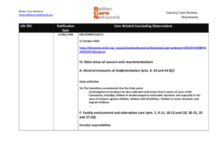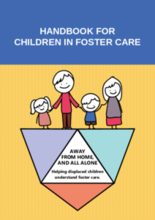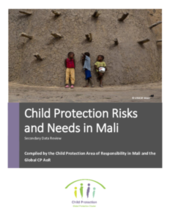Displaying 251 - 260 of 525
This country care review includes the care related Concluding Observations adopted by the Committee on the Rights of the Child as part of its examination of Mauritania's initial reports, as well as other care-related concluding observations, ratification dates, and links to the Universal Periodic Review.
This study from Global Social Welfare examined the contributions of potentially stigmatizing war violence exposures and more recent post-conflict reintegration experiences to intimate partner violence for girls in Sierra Leone. Overall, this sample reported middling levels of community reintegration, and similar average rates of family reintegration.
This is a child-friendly summary of a handbook developed specifically to create a Foster Care Programme for unaccompanied and separated children (UASC) within the Rohingya community in Malaysia.
This is a child-friendly summary of a handbook developed specifically to create a Foster Care Programme for unaccompanied and separated children (UASC) within the Rohingya community in Malaysia.
This paper explores how unaccompanied refugee children from Syria made their way to destination countries and how they become unaccompanied and the consequences of being unaccompanied.
This review of secondary sources refers to information on child protection risks and violence against children in Mali, collected from 2016 to 2018.
The Alliance for Child Protection in Humanitarian Action and Better Care Network are calling for the prompt reunification of separated children with their families and to provide interim care in accordance with the UN Guidelines for Alternative Care of Children.
Este Seminario en línea ayuda a proveedores, cuidadores primarios y otros involucrados en el cuidado de los niños inmigrantes, a reconocer los efectos de la separación traumática en estos niños a diferentes edades.
The aim of this study was to summarise the current evidence regarding gender differences in the mental health of unaccompanied refugee minors (URM) and to identify gaps in research.
With a focus on the situation in Lebanon, Turkey, Jordan, and Greece, this report aims to provide a better understanding of the gendered impact of the refugee crisis on unaccompanied adolescent boys, aged 13 to 17, and men, single or living separately from their families; and to highlight actual and potential gaps in the humanitarian response.




